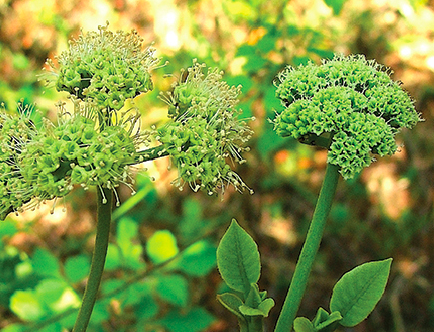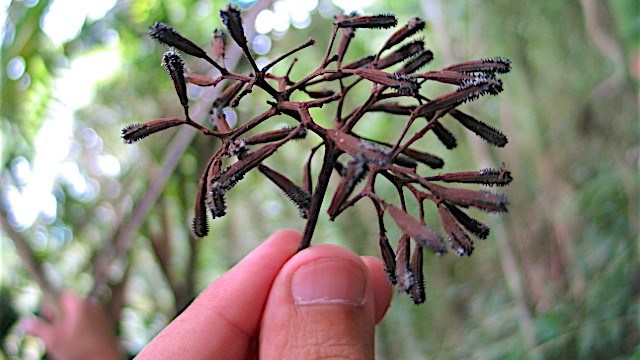- The two newly described trees have been named Pisonia horneae and Pisonia roqueae after two women who spent several decades trying to document plants of Puerto Rico.
- The trees belong to the genus Pisonia, a group of “birdcatcher trees” known to produce sticky seeds that can entangle (and sometimes kill) birds.
- However, whether Pisonia horneae and Pisonia roqueae use birds to disperse their fruits is currently unknown, the researchers say.
From the Caribbean island of Puerto Rico, scientists have described two new species of Pisonia trees — a group of notorious “birdcatcher trees” known to produce sticky seeds that can entangle (and sometimes even kill) birds.
The two newly described trees have been named Pisonia horneae and Pisonia roqueae after Frances W. Horne and Ana Roqué de Duprey respectively, two women who spent several decades trying to document plants of Puerto Rico, researchers report in a new study published in PhytoKeys.
“Just like the two large trees remained unrecognised by science until now, the enormous efforts of these two women, who dedicated part of their lives to botanical work, remained largely unrecognised by the community,” Jorge C. Trejo-Torres, researcher at The Institute for Regional Conservation in Florida, U.S., said in a statement.

Both trees, locally known as corcho, are currently known only from Puerto Rico. So far, the researchers have recorded only isolated individuals or small groups of these trees on ravine banks, cliffs, or rocky areas.
“These observations might suggest that either trees tend to colonize these particular habitats due to physiological requirements, or that they represent relicts of a former, more continuous population that was severely fragmented during the intense deforestation period experienced in the island for the past centuries,” the authors write in the paper.
Many species of Pisonia are known to disperse their sticky fruits or seeds via birds. However, whether the newly described species use birds to disperse their fruits too, is currently unknown, the researchers say.
“So far, we do not know of cases where birds have been trapped by the sticky fruits of the new species, but future studies will explore this possibility,” said the study’s lead author, Marcos A. Caraballo-Ortiz of the Pennsylvania State University.
With the formal addition of Pisonia horneae and Pisonia roqueae, Puerto Rico is now home to six species of Pisonia, according to the study.

Citation:
- Caraballo-Ortiz MA, Trejo-Torres JC (2017) Two new endemic tree species from Puerto Rico: Pisonia horneae and Pisonia roqueae (Nyctaginaceae). PhytoKeys 86: 97-115. DOI: 10.3897/phytokeys.86.11249